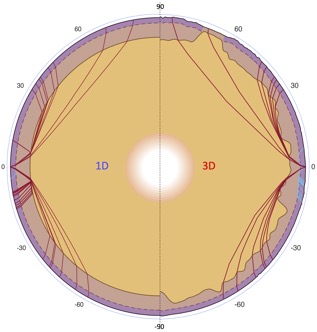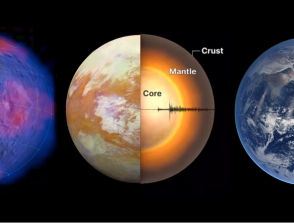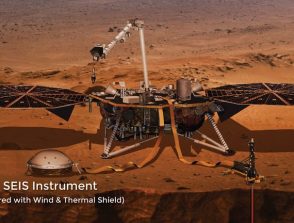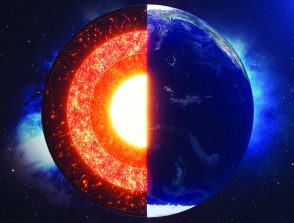Determination of the interior structure of the Moon by joint inversion of seismic data and Mineralogy and Thermal evolution constraints

Start: 01 September 2021
End: 27 December 2024
Supervisors :
Philippe Lognonné, Henri Samuel, Taichi Kawamura
Related observatories :
InSight Observatory
Related teams :
Planetology and Space Sciences
Related themes :
Earth and Planetary Interiors
Status: Defended
The internal structure of the Moon is crucial evidence for understanding its formation, evolution, and bulk composition. Determining the depth of the crust-mantle interface is particularly important for comprehending those questions. The Apollo Passive Seismic Experiments provide a valuable dataset for investigating the lunar Moho depth. However, exploiting and analyzing the frequently contaminated Apollo seismic data is challenging, resulting in a limited number of usable moonquakes and sparse sampling of the lunar interior. Additionally, the strong scattering of seismic waves in the subsurface of the Moon has prevented the detection of unambiguous secondary phases (e.g., reflection or conversion phase), leaving only direct P- or S-wave arrival times available. Consequently, determining the depth of the Moho is difficult, and previous studies show relatively large uncertainties in their results.
On the other hand, data obtained from the Gravity Recovery and Interior Laboratory mission and the Lunar Reconnaissance Orbiter mission, conducted after the Apolloera, allow us to better constrain the global crustal thickness of the Moon. While such crustal thickness model provides high precision of lateral variations, the data still require anchoring points to constrain the average crustal thickness. Normally, seismically detected thickness at single locations can play such a role.
Furthermore, significant variations in crustal thickness are expected to cause differences in the underlying mantle temperature. Incorporation of a detailed thermodynamic model with phase equilibrium effects can offer us additional constraints in studies of upper mantle seismic velocity variations. This thermal model can benefit from the adequate constraints from seismic and gravity data, thereby providing us with a detailed 3D velocity structure of the lunar mantle.
In this study, we first presented the artifacts that are observed in the Apollo passive seismic data and proposed some cleaning methods for the removal of these artifacts. We conclude by illustrating the efficiency of these cleaning techniques on the collection of major lunar impacts and provide the associated data for future work.
In order to investigate the lunar crustal thickness, we use Apollo seismic data and a Bayesian approach based on a Markov chain Monte Carlo method to invert the lateral variations of lunar crustal thickness. Then we compare the result with the corresponding crustal thickness derived from GRAIL gravity data. These seismic detections of Moho depths show good consistency on the relief with that derived from gravity data and help anchor the global average crustal thickness of the Moon.
However, independent analysing of the seismic and gravity data is incapable to constrain the detailed lunar crust and upper mantle structure. Hence, we further conduct a joint inversion of Apollo seismic data, LRO topography data, GRAIL gravity data, and thermal constraints to provide a detailed illumination of the lunar interior. We used a three-layer crust model along with a 3D mantle velocity model derived from a thermal model. This approach allowed us to better constrain the structure of the lunar crust and upper mantle compared to previous studies.







